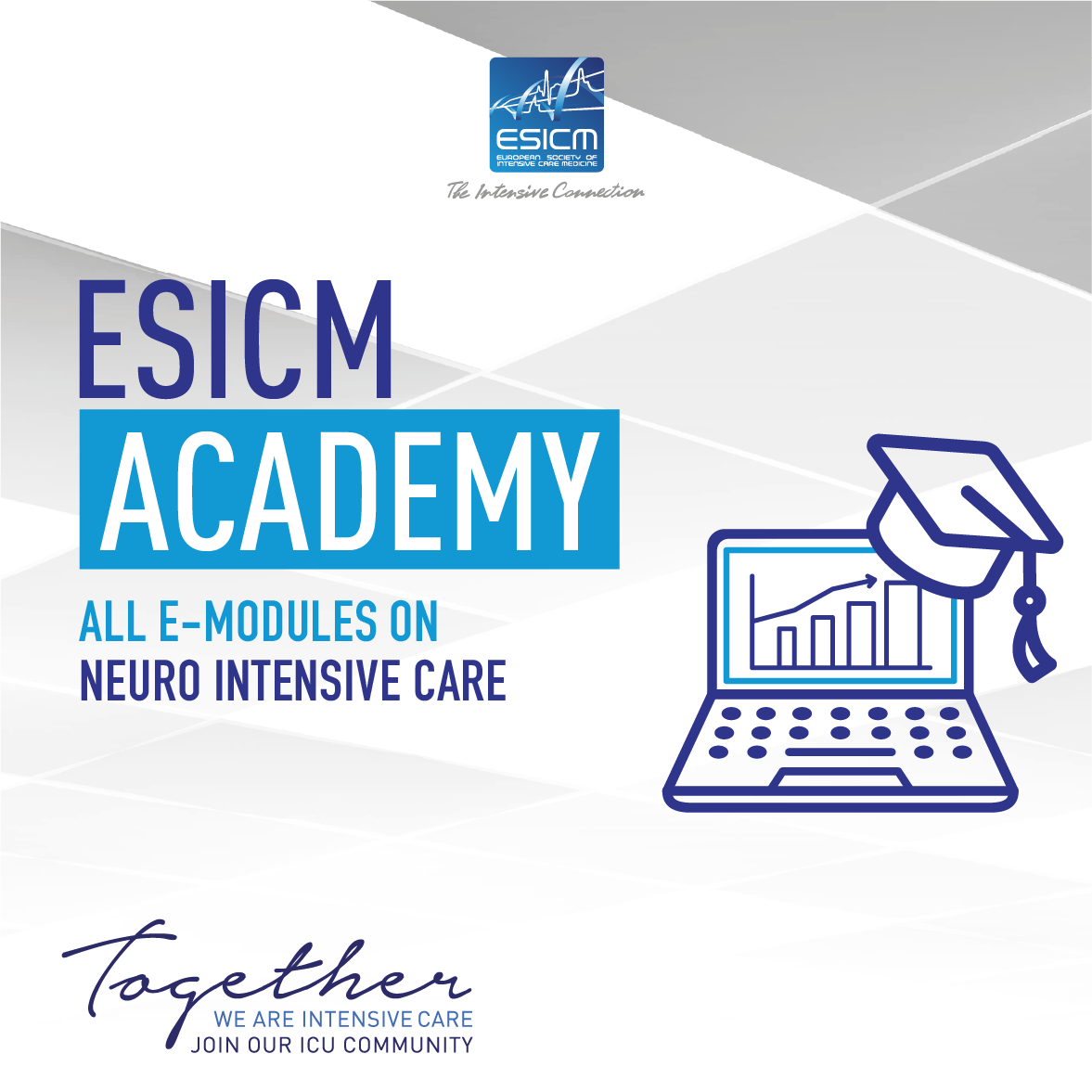ESICM Academy: Highlights of the month (NIC)

ESICM Academy: browse the Neuro Intensive Care eModules
Academy eModules are electronic books grouped into categories. They contain updated, peer-reviewed, evidence-based training material. ESICM Academy is accredited by the European Accreditation Council for Continuing Medical Education (EACCME).
If you are an ESICM member, you can access for free all the courses available on the Academy. This month, we bring to your attention all the eModules related to the Neuro Intensive Care Section.
Acute Ischaemic Stroke
After studying this module you should be able to list the possible causes of stroke; describe the difference between an ischaemic and a haemorrhagic stroke; manage complications in a patient with stroke; describe how to initiate appropriate treatment in a timely manner.
Neuromuscular Conditions
Weakness may precipitate ICU admission, and can result from generalised disease states (such as malnutrition), critical illness (such as severe sepsis) or those specific states which primarily affect the neuromuscular system e.g. myasthenia gravis, Guillain–Barré Syndrome (GBS).
Coma and disorders of consciousness (DOC)
Careful clinical examination and patient’s medical history analysis are the cornerstones of DOC patient management. For example, during coma, determining whether the patient presents a focal sign or not play a crucial role during the stratification of the etiological workup. Nevertheless, a thorough neurological examination may be difficult to perform in poorly cooperative DOC patients.
Traumatic Brain Injury (TBI), Part I-IV
This module concentrates on the management of severe TBI and summarises the main aims in the early stage of TBI management; describes the steps of immediate TBI assessment; lists and describes investigations required in patients with TBI.
Neuroimaging
The Most common neuroimaging techniques are computed tomography, magnetic resonance imaging and optic nerve sheath measurement. After studying this chapter, the student should be able to understand how the different imaging modalities work, identify the main indications for each diagnostic test and choose the best one for a given pathology.
Browse the Academy to find the content that best suits your needs and keep learning!